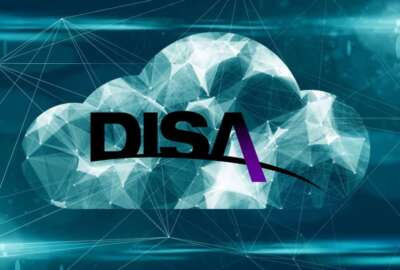

Defense Collaboration Services wants to move to MilCloud 2.0 by October.
MilCloud 2.0 officially launched Feb. 1, but that does not mean agencies are transitioning just yet.
The Defense Information Systems Agency’s (DISA) Defense Collaboration Services (DCS) is serving as a guinea pig for the Defense Department in moving to the newest iteration of MilCloud.
DCS aims to fully move to MilCloud 2.0 by this October, making it one of the first agencies to transition. The service is currently the largest user of Milcloud 1.0.
“We have a strategic plan and a tactical plan of how we are going to be able to deploy DCS into MilCloud 2.0. We have weekly meetings, we have subteams that are meeting to deal with deployment issues, cybersecurity issues, infrastructure issues and all those other things we need to do to deploy DCS into MilCloud 2.0,” DCS program manager Yong Shin told Federal News Radio.
“Right now hosting cost is a significant portion of our annual bill. Whenever we are able to reduce the cloud hosting bill we are going to be able to leverage those funds to other programs and other features and enhancements that our customers are looking for,” Shin said. “We are going to be able to go in there and create our own virtual private cloud and leverage all the efficient cloud processes they have.”
For example, Shin said if DCS customers are not using the cloud as much on the weekend, the bill will be lower.
MilCloud 1.0 has a more cumbersome billing model and does not provide all the features people have come to expect from cloud, the DCS program manager said.
“It’s exciting times here at DISA. In terms of challenges, whenever you try to do something like moving a service into a new environment there are going to be some challenges, but we have a team in place to look into those challenges,” Shin said. “This is not anything new because we moved DCS into MilClould 1.0 just a few years ago. This is not something we are inventing.”
Shin said DCS is also looking forward to taking advantage of the “containerization” MilCloud 2.0 offers.
“You can stand up the equipment that you need and turn down equipment that you don’t need, so you can save money that way,” Shin said. “The customers are going to certainly benefit from it because they are going to see more reliable service, more available service and with the additional funds we can use it to deliver other features.”
Along with the rollout of MilCloud 2.0, DCS is introducing a second variation of its own.
DCS provides free web conferencing and instant messaging to DoD employees. The service hosts more than 18,000 people a day.
DCS 2.0 will use a new software called Big Blue Button, an open source web conferencing center that is based on Linux.
“We are going to deliver a new version of Big Blue Button software to deliver [DCS 2.0],” Shin said. “This will have more enhanced audio. This new software is going to have multiuser whiteboarding and closed caption breakout rooms.”
DCS 2.0 will integrate voice so DoD employees can dial into web conferences.
DCS is also upgrading the different components to improve the security of the application.
“The big thing with this new software is DCS used to be based on [transmission control protocol], we are going to go to [user datagram protocol]. The performance should be much better,” Shin said.
DCS 2.0 will be introduced in the new MilCloud 2.0.
Copyright © 2025 Federal News Network. All rights reserved. This website is not intended for users located within the European Economic Area.
Scott Maucione is a defense reporter for Federal News Network and reports on human capital, workforce and the Defense Department at-large.
Follow @smaucioneWFED

